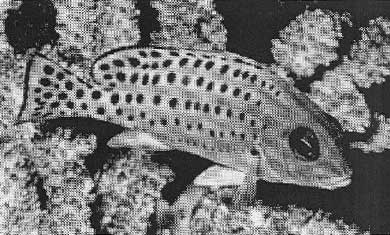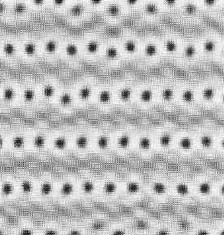Biological pattern formation
In 1952, the British mathematician, Alan Turing, wrote his seminal paper entitled The Chemical Basis of Morphogenesis, Phil. Trans. R. Soc. Lond., B237, 37-72. In it, he hypothesized that to understand the mechanism of development in plants and animals, it was essential to investigate how basic processes interacted. As such, one could say that he was one of the world's first systems biologists! He showed the remarkable phenomenon that stable processes could combine to produce an instability. The particular example he took was of diffusion-driven instability. This phenomenon has now been found in chemistry but it is still controversial in biology. However, the model does produce patterns that are intriguingly similar to those observed in animals and has stimulated a number of laboratories to carry out experiments to test the model. See publications 101, 102, 117, 140, 144, 159.
Spatial patterning on the fish Pomacanthus maculatus and a numerical simulation of a Turing system showing a pattern of spots and stripes [Reproduced with permission from publication 101].
** Work carried out in collaboration with R.A. Barrio, J.L. Aragon, C. Varea, T. Sekimura, A. Madzvamuse, A.J. Wathen, H. F. Nijhout, M. Torres and D. Gil

